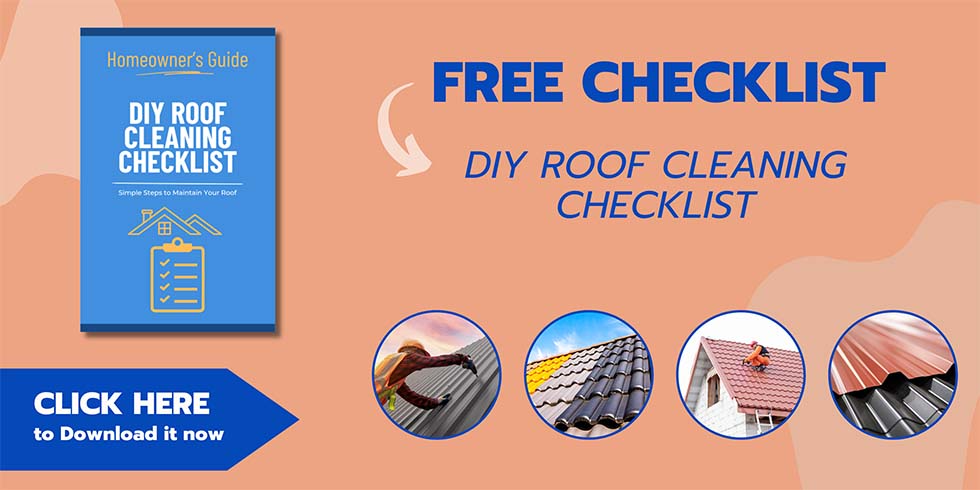Flashing is an essential component of any roofing system, yet it is often overlooked or improperly installed. Flashing is a thin strip of metal or other material that is installed around roof openings, such as chimneys, skylights, and vents, to prevent water from seeping into the building. It is a critical element in protecting a roof from water damage, which can lead to costly repairs and even structural damage.
Roof flashing is designed to direct water away from vulnerable areas of the roof where leaks are most likely to occur. Without proper flashing, water can seep into the smallest gaps and cracks in the roof, leading to rot, mold, and other types of damage. Flashing is particularly important in areas with heavy rainfall or snow, where water can accumulate on the roof and cause significant damage over time.
Fundamentals of Roof Flashing
Roof flashing is an essential component of any roofing system. It is designed to prevent water from penetrating the roof and causing damage to the underlying structure. Flashing is typically made of metal, such as aluminum, copper, or galvanized steel, and is installed at critical points on the roof where water is likely to penetrate, such as around chimneys, skylights, and vents.
There are several types of flashing that can be used, depending on the specific needs of the roof. The most common types include step flashing, continuous flashing, and drip edge flashing. Step flashing is used around chimneys and other vertical structures that intersect with the roof. Continuous flashing is used along the edges of the roof, while drip edge flashing is used at the edge of the roof to direct water away from the fascia.
Proper installation of flashing is critical to the effectiveness of the roofing system. Flashing must be installed in a way that allows water to flow freely off the roof and away from the building. It must also be securely fastened to the roof to prevent it from being blown off by wind or other weather conditions.
In addition to preventing water from penetrating the roof, flashing also helps to prevent leaks around chimneys, skylights, and other roof penetrations. It is important to inspect flashing regularly to ensure that it is in good condition and functioning properly. Any signs of damage or wear should be addressed immediately to prevent further damage to the roof and underlying structure.
Overall, the fundamentals of roof flashing are critical to the protection of any roofing system. Proper installation and maintenance of flashing can help to prevent water damage and leaks, ensuring the longevity and effectiveness of the roof.
Materials Used in Flashing
Metal Flashing
Metal flashing is one of the most commonly used materials for flashing in roofing applications. It is durable, long-lasting, and can withstand extreme weather conditions. The most commonly used metals for flashing include aluminum, copper, and galvanized steel.
Aluminum flashing is lightweight and easy to work with. It is also resistant to corrosion and rust, making it a popular choice for many roofing applications. Copper flashing is more expensive than aluminum, but it is also more durable and has a longer lifespan. Galvanized steel flashing is affordable and strong, but it is prone to rust and corrosion over time.
Rubber and Plastic Flashing
Rubber and plastic flashing are becoming increasingly popular in roofing applications due to their flexibility and ease of installation. Rubber flashing is made from synthetic rubber and is resistant to UV rays, making it ideal for use in areas with high sun exposure. Plastic flashing is made from PVC or other synthetic materials and is lightweight and easy to install.
Composite Flashing
Composite flashing is a combination of different materials, such as rubber and metal, to create a more durable and long-lasting flashing material. Composite flashing is resistant to weathering, UV rays, and corrosion, making it an excellent choice for areas with extreme weather conditions.
In conclusion, the choice of flashing material will depend on the specific needs and requirements of the roofing application. Metal flashing is a popular choice due to its durability and strength, while rubber and plastic flashing offer flexibility and ease of installation. Composite flashing is a combination of different materials and offers superior resistance to weathering and UV rays.
Flashing Installation Techniques
Step Flashing
Step flashing is a popular technique used for installing flashing in roofs that have a step design. This technique involves installing individual pieces of flashing over each shingle and allowing them to overlap each other. This overlapping design ensures that water is directed away from the roof and towards the gutters.
When installing step flashing, it is important to ensure that each piece is properly secured to the roof deck and the adjacent wall. This can be achieved by using roofing nails or screws. It is also important to ensure that the flashing is properly aligned with the shingles to prevent any gaps that may allow water to seep through.
Continuous Flashing
Continuous flashing is another popular technique used in roof installation. This technique involves installing a continuous piece of flashing along the length of the roof. The flashing is then secured to the roof deck and the adjacent wall.
Continuous flashing is ideal for roofs that have a flat design or a low slope. It provides a continuous barrier that prevents water from seeping through the roof and causing damage to the interior of the house.
Counter Flashing
Counter flashing is a technique used to protect the base of chimneys, skylights, and other roof penetrations. This technique involves installing a piece of flashing over the base of the penetration and then installing a second piece of flashing over the first.
The second piece of flashing is then secured to the adjacent wall and the roof deck. This creates a barrier that prevents water from seeping through the base of the penetration and causing damage to the interior of the house.
In conclusion, proper installation of flashing is essential for protecting the roof from water damage. The use of step flashing, continuous flashing, and counter flashing techniques can help ensure that water is directed away from the roof and towards the gutters. It is important to hire a professional roofing contractor who is knowledgeable and experienced in installing flashing to ensure that the job is done properly.
Common Flashing Points on a Roof
Chimneys
Chimneys are one of the most common flashing points on a roof. The flashing around a chimney is typically made of metal, and it serves to prevent water from seeping into the roof where the chimney meets it. The flashing is installed in a series of layers, with each layer being overlapped by the next to create a watertight seal. It’s important to ensure that the flashing is properly installed and maintained to prevent leaks.
Vents
Vents are another common flashing point on a roof. They are used to allow air to circulate through the attic space, and they are typically covered with a metal cap to prevent rain from entering. The flashing around a vent is similar to that around a chimney, with layers of metal overlapping to create a watertight seal. It’s important to ensure that the flashing around vents is properly installed and maintained to prevent leaks.
Dormers
Dormers are structures that protrude from the roof and provide additional space in an attic or upper level of a home. They are also a common flashing point on a roof. The flashing around a dormer is typically made of metal, and it serves to prevent water from seeping into the roof where the dormer meets it. The flashing is installed in a series of layers, with each layer being overlapped by the next to create a watertight seal. It’s important to ensure that the flashing around dormers is properly installed and maintained to prevent leaks.
Valleys
Valleys are the areas where two sections of a roof meet at an angle. They are another common flashing point on a roof. The flashing in a valley is typically made of metal, and it serves to prevent water from seeping into the roof where the two sections meet. The flashing is installed in a series of layers, with each layer being overlapped by the next to create a watertight seal. It’s important to ensure that the flashing in valleys is properly installed and maintained to prevent leaks.
Role of Flashing in Weatherproofing
Flashing is an essential component of any roofing system. It is a thin strip of material, usually made of metal or plastic, that is installed on the roof to prevent water from seeping into the building. Flashing is installed in areas where the roof meets a vertical surface, such as a wall or chimney, or where two different roof surfaces meet.
One of the primary functions of flashing is to weatherproof the roof. Flashing is installed in areas where water is likely to accumulate, such as valleys and eaves. It is also installed in areas where there is a change in the roof’s pitch or direction. Flashing ensures that water is diverted away from these areas and does not seep into the building.
Flashing also plays a crucial role in preventing leaks. When water seeps into a building, it can cause damage to the structure and lead to mold and mildew growth. Flashing helps to prevent this by creating a barrier between the roof and the building. It ensures that water is directed away from the building and does not penetrate the roofing system.
In summary, flashing is an essential component of any roofing system. It plays a critical role in weatherproofing the roof and preventing leaks. Proper installation of flashing is crucial to ensure that the roofing system provides adequate protection against the elements.
Maintenance and Repair of Roof Flashing
Inspection Best Practices
Regular inspection of roof flashing is crucial to ensure its effectiveness in protecting the roof from water damage. It is recommended that inspections be conducted twice a year, in the spring and fall. During inspection, the following best practices should be observed:
- Check for any signs of damage or wear, such as cracks, rust, or missing parts.
- Ensure that the flashing is properly sealed and that there are no gaps or openings.
- Verify that the flashing is securely attached to the roof and that it is not loose or detached.
- Check for any signs of water damage, such as stains or mold, around the flashing area.
Common Issues and Fixes
Despite regular inspection and maintenance, flashing can still develop issues that require repair. Some common issues and their fixes include:
- Cracks or holes in the flashing: These can be repaired with a sealant or patching material specifically designed for use on roofing materials. The damaged area should be cleaned and dried before applying the sealant or patching material.
- Rust: Rust can weaken the flashing and cause it to fail. If the rust is minimal, it can be removed with a wire brush and then coated with a rust inhibitor. If the rust is severe, the flashing may need to be replaced.
- Loose or detached flashing: This can be caused by improper installation or damage. The flashing should be re-secured to the roof using roofing nails or screws and a sealant.
- Improperly sealed flashing: If the flashing is not properly sealed, it can allow water to penetrate the roof. The flashing should be resealed using a roofing sealant or caulk.
By following these best practices and addressing any issues promptly, homeowners can ensure that their roof flashing is properly maintained and functioning effectively in protecting their roof from water damage.
Building Codes and Standards for Flashing
Flashing is an essential component of any well-designed roofing system. It helps prevent water from seeping into the building, which can cause damage to the structure and its contents. Building codes and standards have been developed to ensure that flashing is installed correctly and meets certain requirements.
The International Building Code (IBC) and the International Residential Code (IRC) are two widely recognized building codes that provide guidelines for flashing installation. These codes require flashing to be installed at all roof penetrations, including chimneys, skylights, and vents. The flashing material must be compatible with the roofing material and must be installed in a way that prevents water from entering the building.
In addition to building codes, there are also industry standards that provide guidance on flashing installation. The National Roofing Contractors Association (NRCA) publishes a Roofing and Waterproofing Manual that includes detailed instructions for flashing installation. The manual recommends using high-quality materials and following manufacturer instructions to ensure proper installation.
It is important to note that building codes and standards are minimum requirements. It is always recommended to exceed these requirements to ensure the best possible protection for the building. A qualified roofing contractor can provide guidance on the best practices for flashing installation and ensure that the installation meets or exceeds building codes and standards.
In summary, building codes and standards play a crucial role in ensuring that flashing is installed correctly and provides adequate protection for the building. Following these guidelines can help prevent water damage and extend the life of the roofing system.
Innovations in Flashing Materials and Design
Flashing materials and design have come a long way in recent years, providing better protection against water intrusion and improving the overall durability of roofs. Here are some of the latest innovations in flashing materials and design:
1. Self-Adhering Membranes
Self-adhering membranes are a popular choice for flashing because they are easy to install and provide a watertight seal. These membranes are made of rubberized asphalt and are designed to adhere to the surface they are applied to. They can be used on a variety of surfaces, including metal, wood, and concrete.
2. Copper Flashing
Copper flashing has been used for centuries because of its durability and resistance to corrosion. It is still a popular choice today, but recent innovations have made it even better. New manufacturing techniques have made copper flashing stronger and more resistant to weathering.
3. Flexible Flashing
Flexible flashing is made of a rubberized material that can be molded to fit any shape or angle. This makes it ideal for flashing around curved surfaces or unusual angles. It is also very durable and can withstand extreme temperatures and weather conditions.
4. Integrated Flashing
Integrated flashing is a new type of flashing that is built into the roofing system. This eliminates the need for separate flashing components and reduces the risk of water intrusion. Integrated flashing is typically made of the same material as the roofing system, ensuring a seamless and watertight seal.
Overall, these innovations in flashing materials and design have greatly improved the protection and durability of roofs. Homeowners and contractors alike can benefit from these advancements and ensure their roofs are protected from water intrusion and other damage.





0 Comments